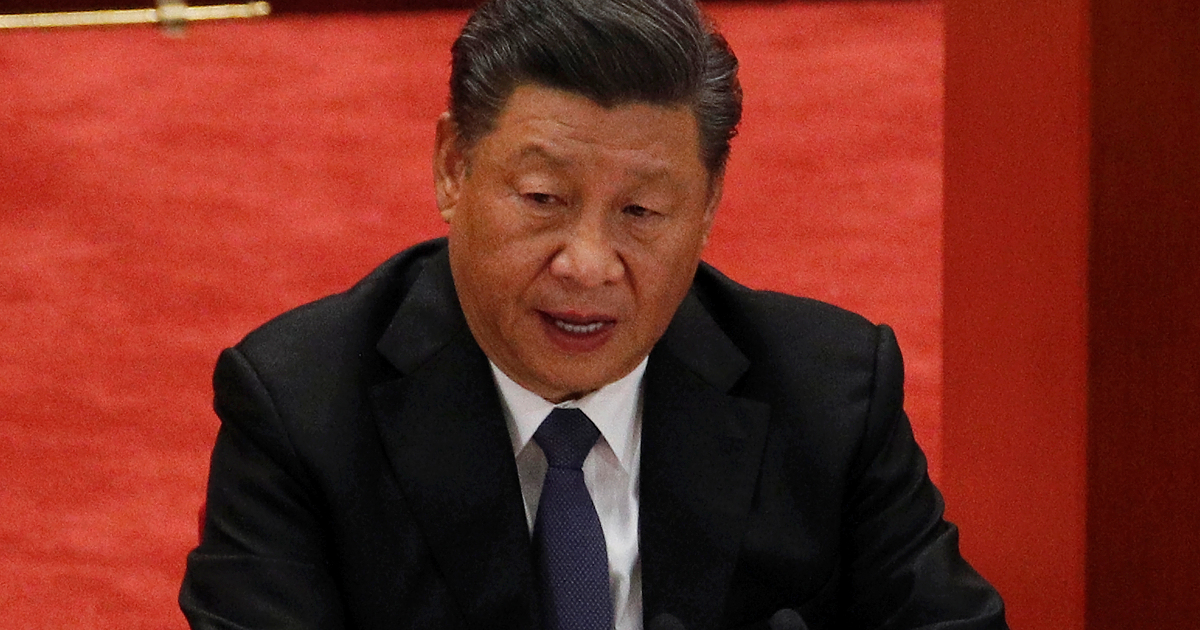Xi Jinping’s China dream with American Characteristics
Behind the cloak of aggression China wears these days lies Xi Jinping’s dream of American characteristics. The strongman of the Chinese Communist Party wants a one on one with President Joe Biden of the United States but without appearing to be too eager about it. The latest bout of China’s aggression this week is probably part of this build-up and the Americans appear not intent on playing the spoiler.
The Americans want the Xi-Biden meeting as much and their media is talking about the G-20 meeting in Rome this October as the ideal place for them to have it out. Rome is a neutral venue, equidistant from Beijing and Washington DC, give or take a thousand kilometres. But they don’t want to be seen to be eager either.
For all practical purposes, the Americans began the courtship dance this March in Anchorage, Alaska when Secretary of State Anthony Blinken and Xi’s confidante and top diplomat Yang Jeichi traded barbs and sarcastic ripostes all the in the name of non-existent camaraderie.
An astute commentator on international affairs, Thomas Wright, who is a senior fellow in the Project on International Order and Strategy at the Brookings Institution, argues in a paper that “the exchange in Alaska may have seemed like a debacle, but it was actually a necessary step to a more stable relationship between the two countries”.
Stability is certainly the piece de resistance but for the present the dance continues, the venue shifting to Tianjin, the teeming port city in north-eastern China. At the high table were US deputy secretary of state Wendy Sherman and foreign minister Wang Yi and vice-foreign minister Xie Feng.
In Alaska, Blinken made Jeichi blink with his unexpectedly caustic remarks before the media: “Our deep concerns with actions by China, including in Xinjiang, Hong Kong, Taiwan, cyber attacks on the United States, and economic coercion toward our allies. Each of these actions threaten the rules-based order that maintains global stability. That’s why they’re not merely internal matters and why we feel an obligation to raise these issues here.”
In Tianjin this week, with the home pitch advantage, Xie remarked that some in the US are treating China as an “imagined enemy”. The anger and emotions pent up since 2019 surfaced in a forceful lament: “The Chinese side expressed its strong dissatisfaction towards the wrong remarks and actions of the US” in relation to investigations into the origins of Covid-19, Taiwan, Xinjiang, Hong Kong and the South China Sea. We urge the United States not to underestimate the strong determination, firm will and strong ability of the 1.4 billion Chinese people to safeguard national sovereignty, security and development interests.”
The Chinese were not yet done. For the first time, they gave the Americans a list of dos and don’ts. One was a list of remedies the US ws expected to implement, ranging from lifting the visa restrictions on Communist Party members, their families, and Chinese students, lifting the sanctions imposed on Chinese leaders and government officials, lifting restrictions on Confucius Institutes and Chinese companies, revoking statements declaring Chinese media as foreign agents, to dropping its request to extradite Meng Wangzhou, Huawei’s Chief Financial Offer, from Canada.
The second list contained some chief Chinese concerns — unfair treatment of Chinese citizens in the United States, harassment of the Chinese embassy and its consulates, the rise of anti-Asian and anti-Chinese sentiment, and violence against Chinese citizens.
Wendy Sherman was no pushover as she reiterated nearly everything Blinken uttered in Alaska. Their meeting ended with both sides declaring that they need to keep talking.
The Chinese feel the next logical thing to do is to work for a meeting between Secretary Blinken and Minister Wang. That can logically end only in a summit meeting between Joe Biden and Xi Jinping. These things take time but if the leaders are willing, time is stands in the way.
If such a summit meeting comes through, and in Rome on the side lines of the G-20, it would make things come full circle for Xi. His last one-to-one with a US President was at the G-20 meeting in June 2019 in Osaka, Japan.
Donald Trump said everything Xi wanted to hear. That he harbours no ‘hostility’ towards China; that he ‘values’ good ties with Xi; that Chinese enterprises and students will get ‘fair’ treatment; that new tariffs will ‘not’ be imposed on China; that the US will give ‘importance’ to China’s concerns on Taiwan; that the US will “adhere’ to a one-China policy.
And then Covid-19 happened. The trade war escalated. China was accused of hiding the news of the virus outbreak and later accused of leaking the virus. A subsequent call for a probe united the world against China. In its counter, China went on a path of aggression, re-igniting old disputes with neighbours, offending India in Ladakh, clamping down on Hong Kong, and intimidating Taiwan. These were ingredients in a recipe for its isolation.
Since he became president, Biden has been biding time on his China policy. A few peeps here, a few rumours there, but he has not finalised the policy till date. At the same time, he has done nothing that would seem he differs with Trump on China.
Biden wields the weapon of multi-lateralism against China. The coordinated action by the US, the UK, EU, and Canada is a classic example. Then there is the Quad grouping. He speaks for a free and open Indo-Pacific region. He wants the rules-based international order. He has punished China for its crackdown on pro-democracy protesters in Hong Kong, its persecution of Uyghur Muslims in Xinjiang and its attempts to terrify Taiwan.
For all the hard American talk, the contentious issues – except the call for a probe into the origins of Coronavirus – have remained the same since 2019. What changed is the perception before Covid and after Covid.
China, in turn, is no pacifist; nor has it undergone a behavioural change. It has refused to be cowered by Washington’s actions. Rather, it has become more belligerent, coming up with a new counter-sanctions legislation in June. The law allows China to impose penalties on anyone who helps other nations target it with sanctions.
While both sides claim to work for a détente, China’s leadership currently works for two objectives, namely, an end to its isolation and a working relationship with the United States that is based on the recognition of China’s status as an Asian giant. For Xi Jinping, it is a matter of being counted as the world’s second-most important person after Biden. That is the message a summit meeting will send to the billion and more Chinese people. That would assuage Xi’s domestic constituency allowing to once again pick up the threads of his expansionist thoughts severed by a virus.












